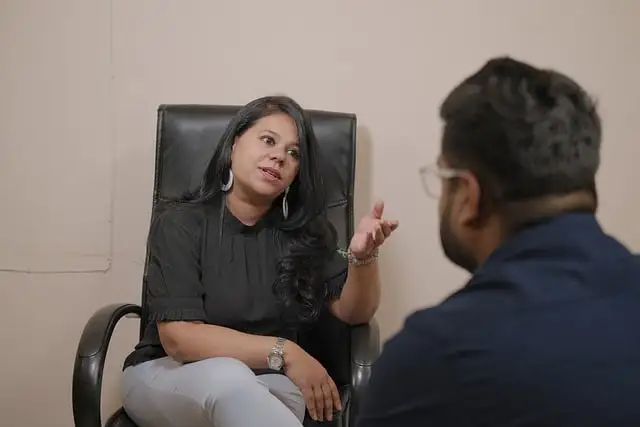Healthy ways to persuade someone to do right

People don’t always want to hear from us, even if we sincerely wish them well and try to help. This can be frustrating and make you think about how to influence another person’s behavior so that they do the right thing.
Many people manipulate at such moments to get their way, but this is not the way out—this approach to communication can destroy trust, which is the basis of a strong relationship.
It is better to learn about several healthy ways of persuasion that will help the other person hear you and influence him to do what you think is right. Use them when you need to convey your ideas and suggestions to someone.
5 Healthy ways to persuade someone to do right
1. Use narration to turn boring facts into an interesting experience

People do not listen to us because we speak exclusively in the language of facts. Dry evidence and the truth can sound tedious, so the conversation does not bring the desired result.
Instead of listing arguments, it is better to use a storytelling technique when the evidence of one’s rightness is presented as an attractive, exciting, and emotional story. V I S I T A F R I N I K . C O M . Here are some ways to turn any facts into a convincing story.
Start by emphasizing the key point
It is optional to start from afar to avoid getting confused and not make the interlocutors bored. But you should not limit yourself to dry facts, either. For example, you want to use the phrase, “Our marketing strategy has increased sales by twenty percent,” but you don’t think it will impress your partners.
Start like this: “Imagine a small business that wants to break even, and then implements our marketing strategy and sees sales growth of as much as twenty percent within three months. That’s what happened to one of our clients.”
Use visual elements
People process visual elements faster than text. Use diagrams, graphs, and other objects to make your story more convincing when presenting at work.
Remember the visual part of personal conversations. For example, if you’re trying to convince a girl that you need to buy something, talk about the benefits by showing a photo of your chosen choice. This will help her better understand your point of view and support your decision.
Make it personal, or use the reviews
The evidence links to your or the person you are talking to’s experience. This will help a person not just hear your arguments but feel that they are correct.
You can also use other people’s feedback to convince the other person that they should do as you suggest. This strategy works because it forces him to hear your opinion and someone else’s and, therefore, make a decision based on the analysis of a wider audience.
2. Use the Benjamin Franklin Effect
The principle of reciprocity is a powerful psychological trigger. People are likelier to say yes to those who have done something for them. This principle can be applied by offering the interlocutor something valuable or pleasant. For example, I can say that I am ready to help, compliment him, or tell him useful information.
Why does it work? Reciprocity creates a sense of duty. When someone does something good for us, we feel obligated to respond in kind—this is the Benjamin Franklin effect. Start a conversation with a tempting offer or praise to ensure the person does what you need. But, of course, considering the relevance of the situation.
Know the counterarguments and how to refute them
Before having a serious conversation with someone, think about what counterarguments your interlocutor can bring. Make a list, and then try to refute them so that your words sound convincing. For example, you are talking to your boss about the fact that you need to buy expensive equipment.
Of course, he will doubt your idea and the need for such waste. Go ahead and say, “Of course, you may think my offer is too expensive initially. However, long-term savings through improved operational efficiency and reduced downtime will more than pay off the initial investment.”
3. Master the art of non-verbal communication

Non-verbal communication often speaks louder than words. Imagine entering a room, standing straight with a confident smile, and using open gestures — your presence attracts attention and commands respect. When your body language reflects your words, you are believed. And this can be learned. Here’s a short list of things to keep an eye on.
4. Eye contact

Maintain constant eye contact with the other person. If you are talking to a group or an audience, look at each of its members so that each feels recognized.
The pose
Stand or sit up straight, squaring your shoulders to look more confident. It is also worth taking a pose corresponding to the interaction context. For a formal setting, keep a low profile; for a creative or personal one, be open and dynamic to promote mutual understanding and engagement. By the way, you can learn more about body language gestures and what they can say here.
Facial expression
An inappropriate and sincere smile adds to our attractiveness, which is important for persuasion. It is also worth practicing micro-expressions of the face to give subtle signals to others and react to their words. For example, you can intentionally raise your eyebrows if you need to express surprise or curiosity and nod easily to show that you agree with the interlocutor’s words.
The position of the head
To show interest, he tilted his head slightly to the side. A stable and even position will help you look more confident, and nodding will strengthen the weight of the arguments you are giving.
5. Use the three-part message technique
When trying to sound convincing, straightforward and clear communication is important. If your speech needs to be clearer or filled with water, it will not get a response. Use the three-part communication technique to present information properly and get the other person to do what you want.
First, state the problem or need clearly. E.g., “I wish you would stop putting your books on my desk.” Then explain the solution to the problem as simply as possible: “Your books should have their place — choose a shelf that you like and order it.” Focus on the fact that the way out of the situation is simple and feasible.
Last of all, highlight the advantages of your solution: “Your books will have a beautiful storage place that you will like, and they will not interfere with me.” Be sure to show how your proposal will improve the situation for you and the one you are trying to convince.




